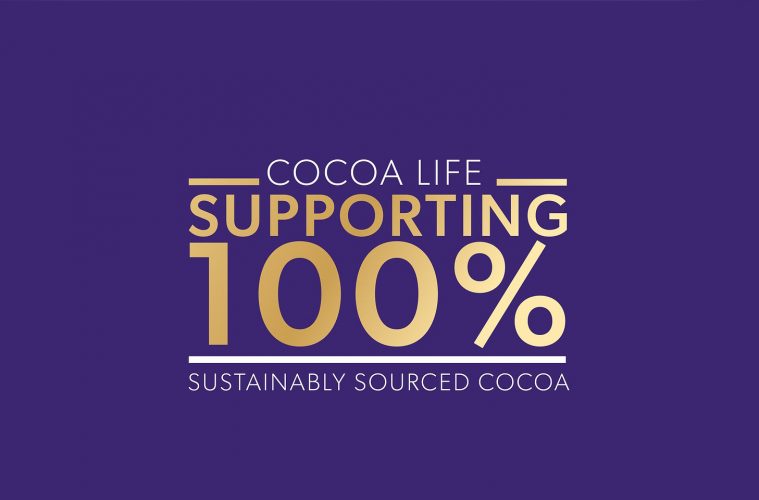Against the backdrop of continuously shifting environmental and global consciousness there’s more awareness than ever of the impact humans have on the world around them. This, coupled with the desire for connection, has caused many to reflect on their choices and more specifically how their purchase decisions align to their values.
The desire to do good by supporting brands that are making real change (in people’s lives and on the environment) and create impact through purchase power is not new, but the trend has gained serious traction in the last five years.
Yaa Peprah Amekudzi, Country Lead of Mondelēz International’s (the makers of Cadbury) Cocoa Life Program in Ghana, says there has been a continued emphasis on perpetuating virtuous cycles across the value chain. She says that while Covid-19 has amplified consumers’ desire to do good, brands have long been relooking their supply chains, with a sweeping shift to stakeholder, not shareholder, primacy.
“As cocoa is the essence of our chocolate, creating a sustainable source of cocoa is vital to our business, which is why we strive to ensure it is ‘made right’. For us, ‘made right’ means addressing the challenges our farmers are facing, like poverty, climate change, gender inequality and limited opportunities for young people. These issues do not have quick fixes, but it starts with a commitment and really walking the talk to apply holistic solutions. “In the last 12 years, we’ve gone from working with 100 communities in Ghana as part of the Cadbury Cocoa Partnership to more than 660 communities now registered with Cocoa Life. Across all six Cocoa Life countries, we’re aiming to work with 200 000 farmers by 2022, impacting over a million people. Right now, we’re on the bus with the farmers, as the navigator. In the near future, we hope to be just a passenger, in an advisory capacity. That’s when we know we’ve done our work well.”
Yaa Peprah Amekudzi, Country Lead of Mondelēz International’s (the makers of Cadbury) Cocoa Life Program in Ghana

[divider] DRIVING SUSTAINABILITY TRENDS[/divider]
According to Dion Chang, trends analyst and founder of Flux Trends, “2020 changed everything, there’s a huge inflection point in terms of what businesses, society and people want. With everyone staying at home over the last year, we all, to some degree or another, had an existential crisis and started reassessing what we’re doing – we did something of a life audit.’’
“There’s a changed consumer mindset in terms of what motivates purchasing decisions. At the beginning of 2020, just before lockdown, we can see we were at a tipping point in terms of sustainability and climate change. It was building up, but what pushed it over the edge was when people started seeing the physical evidence, from the raging fires in California and Australia, to plagues of locusts in East Africa. This jolted us.”
As consumers become more conscious of environmental effects on the planet and the knock-on effect this has on communities, especially those who rely on the land for their livelihood, the need to see evidence of the long-term impact of sustainability initiatives becomes even more key.
Chang continues in this regard, “The currency of sustainability has been diluted.’’ We are at a point where consumers are questioning the validity of the claim and if businesses back up their use of the word, we should see some credibility return.”
[divider]WHAT’S DRIVING THE ‘DO GOODER’ MOVEMENT?[/divider]
Clinical psychologist, Suhaila Ameer, agrees that Covid-19 forced us all to slow down and be more mindful. She believes it’s made us pause and reflect on our priorities, right down to our purchasing decisions. It’s made us crave human connection and ramped up an existing desire to do good.
“Research shows the more we do good, the more we want to do good, because there’s a physiological kickback in terms of the neurotransmitters that are released. Our brain’s pleasure and reward centre lights up as endorphins are released, which improve health and wellbeing, boost the immune system, prompt calmer dispositions and help to diminish stress.”
“When applying impact thinking to purchase decisions, we get the instant gratification of getting something we want, plus in the case of programmes such as Cocoa Life, the knowledge that in doing so, we’re also supporting a cocoa farmer and her family, for example. We want to see the ripple effect of these choices.”
[divider]HOW TO ENCOURAGE MORE PEOPLE TO GET ‘THE DO GOODER GLOW’[/divider]
Chang goes on to add that we want to see the faces of the people we’re reaching out to. “Seeing not a celebrity or influencer’s face, but the face of a real person from the community I’m supporting, would resonate more with me as a consumer. We want to share in their authentic stories.”
Cocoa Life works on the ground with cocoa farmers and their communities to create measurable long-term impacts – turning cocoa farming into a sustainable business, building inclusive, empowered & resilient cocoa farming communities while protecting and conserving forests.
Peprah Amekudzi concludes, “Simply by choosing Cadbury, consumers are supporting our Cocoa Life registered farmers and their families – and in many cases they didn’t even know it. That’s more than one million faces, real people. It’s a true example of impact consumerism in action.”
For more information on Cocoa Life and the impact it’s having on cocoa growing communities visit www.cocoalife.org


